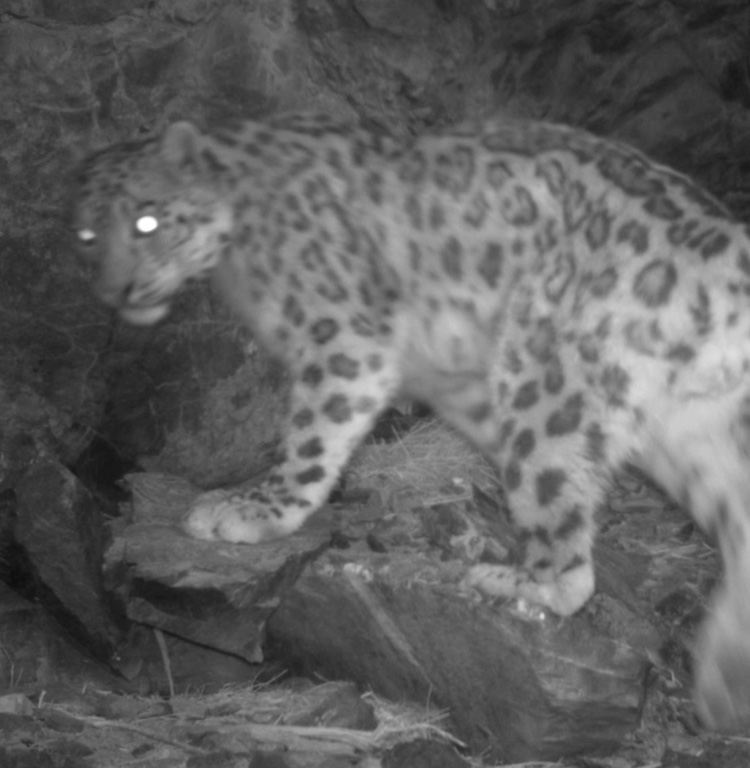Christopher Ward’s partnership with the David Shepherd Wildlife Foundation is helping this big cat to thrive in the mountains of Mongolia and Kyrgyzstan
The snow leopard is one of the most beautiful predators on the planet. Living in the mountains of Central Asia, its spotted coat, thick enough to insulate it from the cold, and wide, fur-covered feet make it ideally suited to its rugged natural habit.
But it’s in danger of extinction through habitat loss, climate change and poaching (especially for that beautiful coat).
One charity determined to reverse this is the David Shepherd Wildlife Foundation (DSWF). Over the last few years, it’s been working with communities in Mongolia and Kyrgyzstan to ensure the snow leopard can flourish again in its natural environment.
According to DSWF: “The mysterious snow leopard is known as the ghost of the Asian mountains. Their thick silver-grey coat makes them the perfect predator for snow-capped mountainous environments. Snow leopards are found in 12 countries in Central Asia with scientists placing population estimates as low as between 3,920-6,390 remaining in the wild today.”



It’s in danger because of habitat loss, climate change and poaching

Five female snow leopards gave birth to at least 12 cubs in 2019
Christopher Ward began supporting DSWF when it worked with Tom Hicks on the C60 Anthropocene GMT. Designed to be worn by Tom on his DSWF-funded expedition to the North Pole, sales from the watch raised £16,000 for the charity.
In Mongolia, DSWF works with partners on economic and educational programmes that raise community awareness of snow leopards. In 2016, thanks to the efforts of DSWF and local people, the Tost mountains were officially named the Tost Nature Reserve.
The new status protected the area and made it off-limits to hunting and mining (plans had been drawn up to mine here – something which would have cut off a vital water source for snow leopards). That work is now paying dividends.
“Our annual camera surveys show a minimum of 13-15 adult snow leopards in the reserve,” says DSWF. “The latest camera survey in 2019 confirmed that five female snow leopards gave birth to at least 12 cubs, the highest number of breeding females and cubs ever counted during more than 10 years of surveys.”

In Kyrgyzstan, where there are between 200-500 snow leopards, DSWF is partnering with local schools to educate children about the big cat after surveys showed an increasing disconnect between children and nature (especially among girls). This leads to negative attitudes towards snow leopards.
DSWF has launched three new learning modules to combat this – and is using money raised by Christopher Ward to expand the project. So far, 58 students have participated in eight immersive overnight eco-camps in the Shamshy valley in Kyrgyzstan – 65 percent of whom were girls.
Another helping hand has come from explorer-conservationist Tom Hicks, who will travel to the North Pole to measure melt rates on behalf of DSWF. While the Arctic is far from the foundation’s target areas, melting ice is a sign of climate change: something that disproportionately affects animals like the snow leopard.
While Christopher Ward has raised £250,000 for ocean preservation charity Blue Marine Foundation over the last year, the fact that it’s also been able to help DSWF is a source of great satisfaction, too. Mike France, CW CEO, says: “We’re honoured to be working with DSWF – and owners of the C60 Anthropocene GMT can take pride from the fact they’ve directly contributed to an organisation that’s helping to preserve one of the most beautiful animals on earth.”
The last word goes to the foundation’s CEO, Georgina Lamb.
“We’re thrilled the C60 Anthropocene GMT has sold so well and that £16,000 has already been raised to support our work with snow leopards,” she says. “It will make a tremendous difference to their conservation as well as to the local communities that are essential in ensuring this big cat’s survival. We’re incredibly grateful to
Christopher Ward.”

